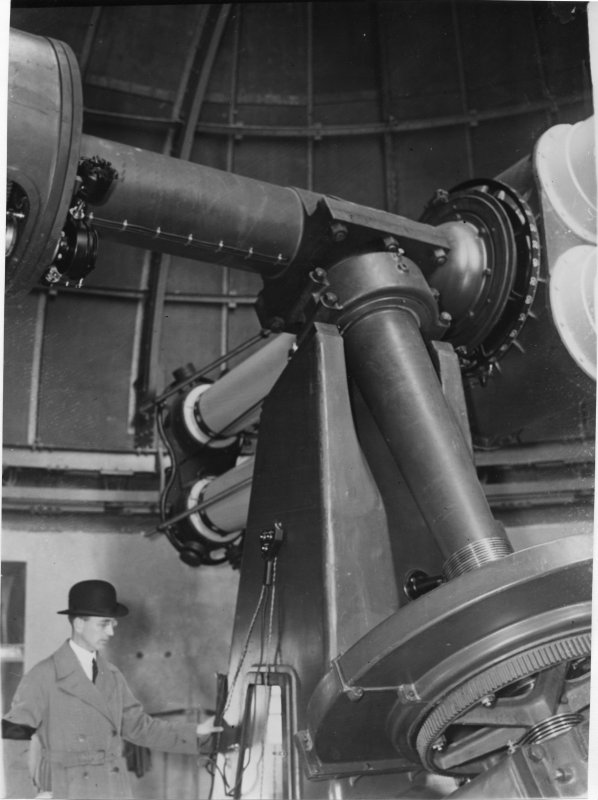|
Advertisement / Annons: |
Observatories that I have visited:
|
Content:
|
2.1: Main building, double refractorWe drive the car up to the summit of Karlsbaderberget. It's a very steep road up the hill and very narrow. There are no parking lots up here today. Maybe better to leave the car down in Saltsjöbaden and take a walk up to the observatory. When I parked the car a young girl with her two children walked by, the boy and his sister were impressed by my car and I started to talk with their mother. She said that her grandfather once lived here. The grandfather is the astronomer Per Olof Lindblad. Even his father was an astronomer too, Bertil Lindblad and he worked at this observatory. Some information about Bertil Lindblad and his work as a professor in astronomy:

This is a side view of the main building with its beautiful arcs. The architect of all these buildings was Axel Anderberg, he also designed the Opera house in Stockholm. 
It's build of bricks and looks like an old palace to me. 
The stairs that take you up to the main building and its main entrance. Nowadays there is a new school here, Kunskapsskolan (Knowledge school). 
Inside the building there is a staircase up to the roof. I remember one night 1996 in Mars or April when the comet Hyakutake was visible, then there was an open house here. Lot of visitors came and I demonstrated telescopes and other equipment to them. My first digital photo of a comet, Hyakutake. 
The impressive main entrance door with its outdoor staircase. 
One of two pillars with star lights welcomes you. 
The main door with its emblem above it, The Three Crowns. 
Three crowns as we have in Sweden in our coat of arms. Is it the polar star at the center ? 
In the basement there was a chemical laboratory where they prepared the photographic plates and then developed them. Astronomers had a very special treatment of the plates to increase the sensitivity, which was of utmost importance. Even from this the lower terrace there is an impressive view over the sea. 
View over the sea and Saltsjöbaden with its hotel at just left of the center of the photography. 
On the backside of the main building is the main observatory building. It holds two big refractors, one of the bigger in the world. One of them has a lens of a huge 60 cm diameter and the other 50 cm. Both of them have a focal length of 8.1 meter. The lens of each telescope is of doublet construction. Manufactured by Grubbs Parsons & Co. One is used for visual observations and the other for photographing. In that time in the late 1920s these instrument was the best you could buy. More about Grubbs Parsons & Co Ltd:
 Credit:
Digitaltmuseum / Tekniska Museet
Credit:
Digitaltmuseum / Tekniska MuseetPhotographer: Unknown Observatoriet i Saltsjöbaden At Digitalt museum I found this photo of an unknown man working with the double refractor. Somewhere I read that the movable parts of the telescope has a weight of 7 tons and included the fundament 11 tons. I looked through this telescope once, I think it was the planet Jupiter we looked at. The floor work as an elevator to always have the correct height relative the telescope. 
Behind these big windows was a library when I did my studies in the 1990s. I spent many hours to read all the old exiting astronomy books. 
Has there been a statue here ? I have looked at old photographs from 1930s and there were nothing here. In the 1990s the club EAF, Ericsson Astronomi Förening used this observatory, only the observatory room.
 Credit:
Digitaltmuseum / Tekniska Museet
Credit:
Digitaltmuseum / Tekniska MuseetPhotographer: Unknown Observatoriet i Saltsjöbaden Same astronomer adjusting something on the telescope. The man is seen wearing a black band on his arm, an indication that a close family member or friend has died. The year can be 1936. They can don't have any heat in this building, still they did observations even if it was -20 degrees Celsius. At last, I have now got my own photos with much more details of the equipment, see next page.
|
|